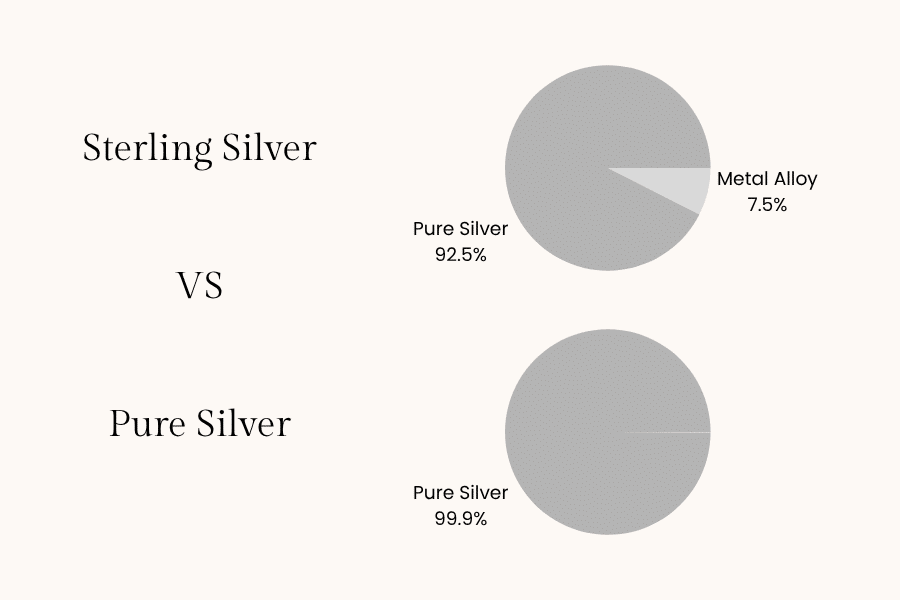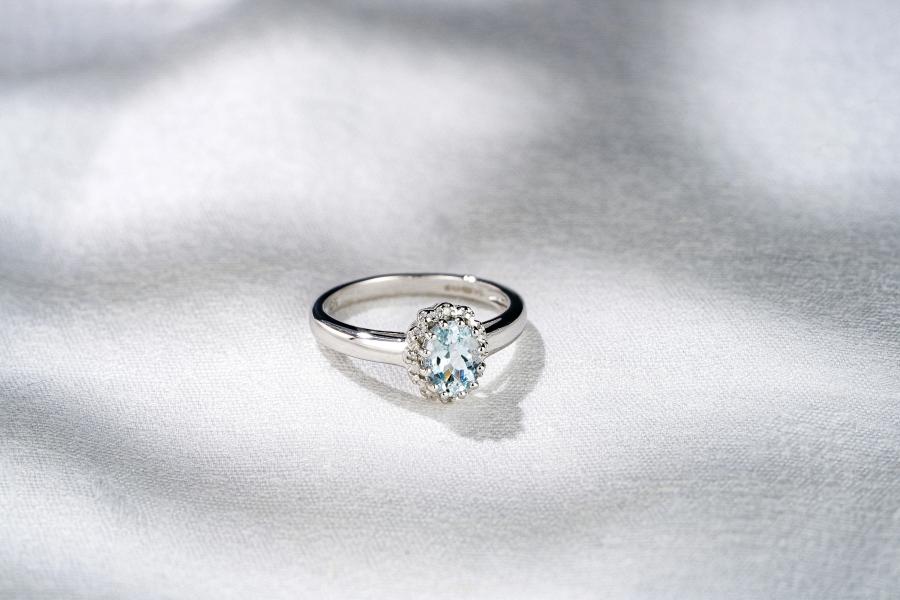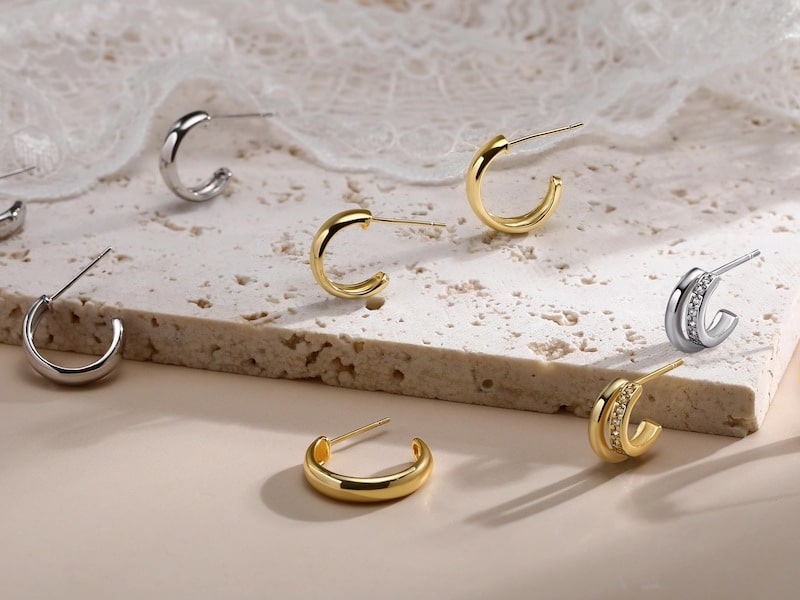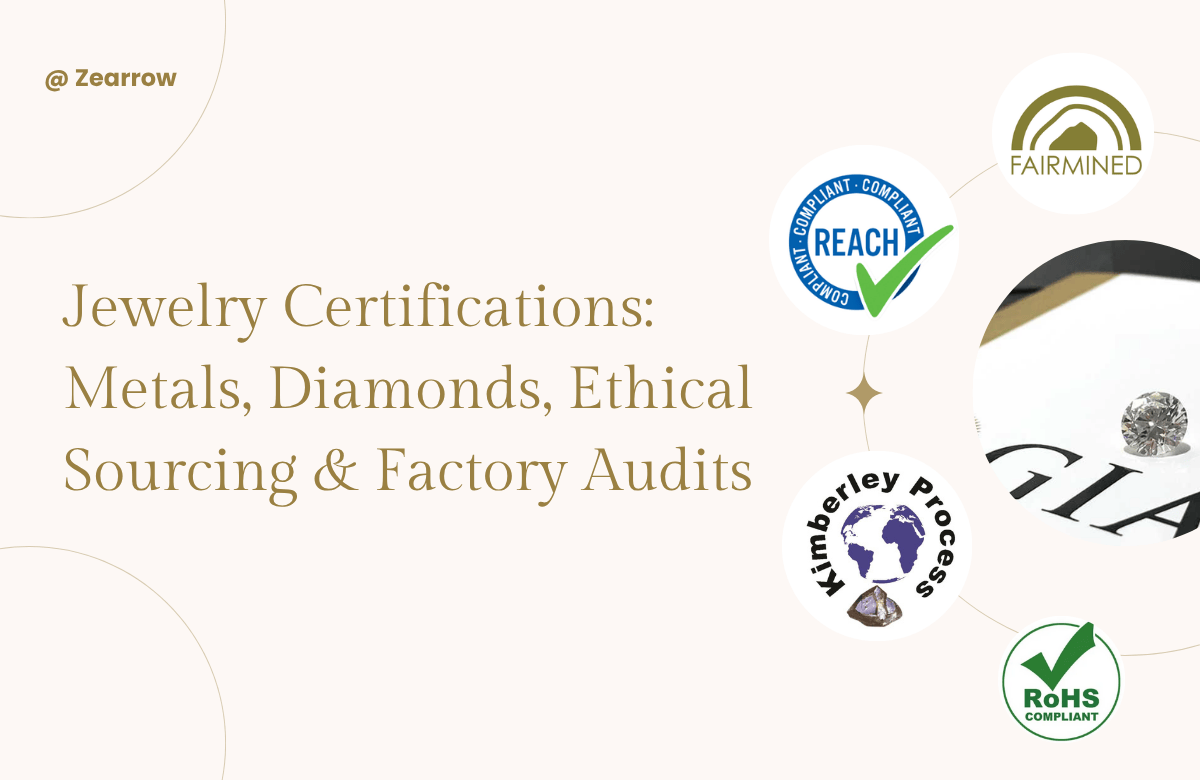Sterling silver and pure silver are very common in the jewelry industry for their timeless beauty and versatility. At first glance, they look alike but after careful examination, you will notice their differences. This includes their composition, durability, shine, tarnish resistance, and value.
Understanding sterling silver vs pure silver is important when choosing a silver jewelry collection that suits your needs and budget. Read on as we break down everything about their differences, including some expert tips you need to know.
What is Sterling Silver?
Sterling silver contains 92.5% pure silver and 7.5% other metals like copper and zinc. This mixture provides additional strength without dulling the silver’s brilliance. Sterling silver jewelry is often marked with the “925” or “s925” stamp, which is an indication of the authenticity. It offers a balance between affordability, durability, and luxury appeal, making it suitable for everyday wear, such as rings, necklaces, bracelets, and earrings.
Sterling silver is an ideal choice for both jewelers and wearers alike, but it can tarnish over time when exposed to air or moisture. However, with regular cleaning and proper storage, the shine will easily be restored.
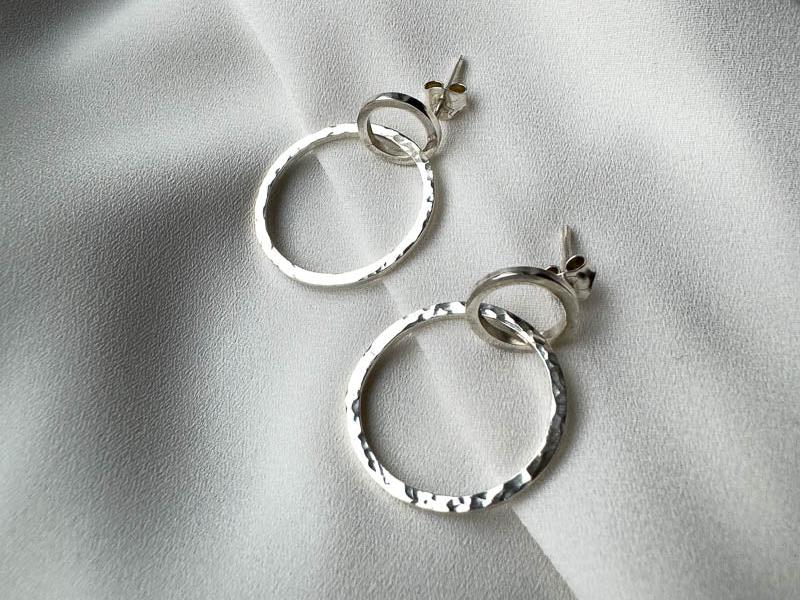
What is Pure Silver?
Pure silver, also known as fine silver, is silver in its most natural form. It contains 99.9% silver with only trace impurities, hence why it’s often marked with the “999” or “s999” stamp.
What is s999 silver? It’s a high purity silver that’s very soft and malleable, which is suitable for intricate custom design pieces but not the best option for everyday wear because it bends, scratches, and loses shape easily with regular use. This silver is best suited for collectible items, display jewelry, or minimalist pieces that are not exposed to daily wear. It’s remarkable for its brilliant shine and high hypoallergenic properties, which makes it suitable for people with sensitive skin.
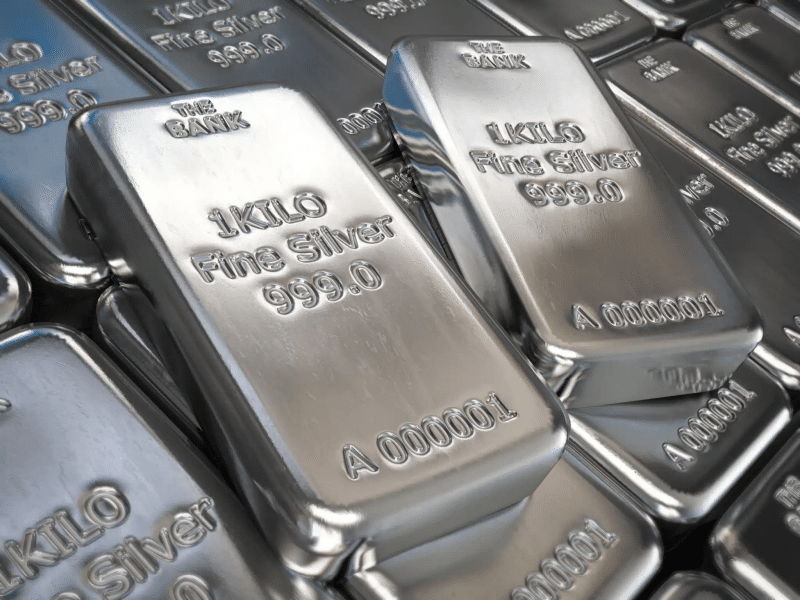
Difference between Sterling Silver and Pure Silver
Explained below is a complete s925 vs s999 differentiation. This will help you know which is better: silver or sterling silver.
| Feature | Sterling Silver | Pure Silver |
| Composition | 92.5% silver, 7.5% alloy | 99.9% silver |
| Durability | Harder and more scratch-resistant | Softer and easily bent |
| Color | Slightly warmer tone | Bright white shine |
| Tarnish | Tarnishes slower than pure silver | Tarnishes quickly |
| Value | Offers better long-term wear value | Costs more per gram, but not suits for jewelry making |
Composition
Sterling silver contains 92.5% pure silver and 7.5% alloy metals like copper and zinc. This combination makes the sterling silver strong and capable of withstanding daily wears and tears.
Pure silver, on the other hand, contains 99.9% silver. The remaining 0.1% are made of trace impurities, which adds additional beauty to the silver’s brilliance.
Durability and Strength
Because of the alloy of other metals (like copper and zinc) in the composition of sterling silver, it’s stronger and less prone to bending or scratching than pure silver. This makes it great for daily wear.
In contrast, pure silver is not alloyed with any other metal. Meanwhile, silver is naturally soft, making it easily deformed and prone to scratches.
Shine and Color
Comparing the physical looks of sterling silver vs pure silver, you will realize that sterling silver has a warmer hue. Its shine and color often appear warmer because of the alloyed metals.
Pure silver has a slightly brighter, white tone. Since it’s not mixed with other metals, the natural shine, color, and brilliance of pure silver is fully retained.
Tarnish Resistance
Both types of silver are bound to tarnish. However, sterling silver takes a longer time to tarnish because of the other metals mixed in its composition. Copper, for example, is very durable and resistant to tarnishing.
Pure silver is entirely a precious metal and very soft. It doesn’t have much strength to repel tarnishing elements. Thus, it easily oxidizes when exposed to air or moisture.
Price and Value
As mentioned earlier, silver is a precious metal, which is quite rare and expensive. But since sterling silver is composed of other metals, it is more affordable and practical for jewelry. Sterling silver is valued for its long-term wear.
Pure silver is fully composed of real silver, which is more costly per gram. This silver jewelry is usually valued for their purity and prestige.
Custom Silver Jewelry Tips for Brands
When the base metal is 925 sterling silver, it can be rhodium-plated to boost its shine and become more resistant to tarnishing. Rhodium plated sterling silver jewelry looks more captivating and lasts longer.
999 pure silver plating is optional for more bright white shine. But since it oxidizes easily, it’s necessary to use e-coating for a more durable anti-tarnish protection.
NOTE: 999 pure silver is very soft and not suitable for jewelry. When used to make jewelry, it will tarnish quickly and lose form.

Is Sterling Silver Good for Sensitive Ears?
Yes, sterling silver is generally safe for sensitive ears. Sterling silver earrings contain 92.5% pure silver, which makes it hypoallergenic, especially when the other 7.5% content doesn’t include nickel or other allergy-prone metals.
Is Sterling Silver Always Marked?
No, not always. While most authentic sterling silver is marked with “925”, “.925”, “s925”, or “Sterling”, smaller and custom-made pieces may not be stamped because of design constraints.
How Long Does Sterling Silver Last?
Sterling silver, especially waterproof silver jewelry can last a lifetime when properly cleaned, stored, and occasionally re-plated to preserve its shine & durability.
How to Tell If Sterling Silver is Real?
There are 2 major assessment methods to know if a sterling silver is real or not. First is jewelry hallmarks and the second is a magnet test.
- Check the inner lining or the body of the silver for stamps like “925”, “.925”, “s925”, or “SS”, or “Sterling”. When you see any of these, it means it’s real.
- Silver is non-magnetic, so if you hold a magnet close to the sterling silver and they stick together, it means it’s fake.
It’s advisable that you use both assessment methods for better guarantee. As a professional jewelry manufacturer, Zearrow also provides Fischerscope XRF Test for the component and thickness of each layer.
Conclusion
While both of them may look similar, sterling silver is a better option for jewelry making thanks to its composition, strength, tarnish resistance, and affordability. It is hypoallergenic and can last for a lifetime when maintained and rhodium-plated occasionally.
